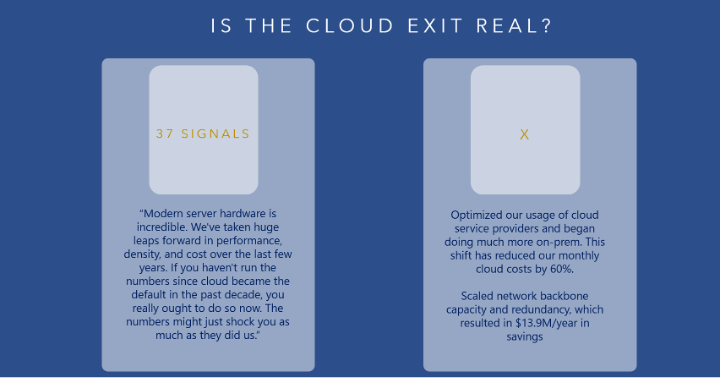The Return of the Data Center
This blog post is adapted from a presentation at the Indianapolis SIM Quarterly Executive Forum. Hylaine is a huge advocate of the organization for networking and thought leadership. Get involved with your local SIM chapter HERE.
For the past 10 years, the cloud has almost become synonymous with infrastructure. Massive migrations, dynamic development, and “Scale, Scale, SCALE!” have been part of what seems like every conversation around software -including those we have at Hylaine.
But should it be? The industry has now had that same decade to experience centralized, rented infrastructure firsthand in all of its glory and sharp edges. In fact, there’s some evidence to show that the pendulum of opinion and benefit may be shifting against the cloud, and a harbinger of The Return of the Datacenter.
Largely, people who are reading this blog are going to fall into one of three camps, so we’ll cover what each of those will get out of it:
I’m staying on prem: This post may bolster your case and judgement! But we’ll discuss concepts that may improve your current infra management and still-existing challenges.
I’m in the cloud: We’ll explain why other organizations may not be joining as quickly or why expanding your hybrid model may make sense.
I’ve started moving to the cloud (or will soon): We’ll be talking about pitfalls to avoid and ways to improve your migration. Or at least your negotiating power!
Is the cloud exit real?
These are loud, opinionated, West Coast voices, but they’re a good starting point for the conversation. David Hansson from 37 Signals is a huge advocate of the cloud exit. Twitter’s slimming down is more than just headcount. The organization realized massive savings by bringing its infrastructure back to a data center.
It’s not a bad idea to recheck costs and expected TCO. Hardware and supporting software for a datacenter have both gotten cheaper. For large servers especially, it’s common for a hardware-only payback period to be less than 6 months compared to retail Pay-as-you-go prices for Hyperscale Cloud Service Providers (HCSPs) such as AWS, Azure, and GCP.
Client Trends
At Hylaine, we’ve seen three common threads among clients who have paused or reverted their cloud moves:
Regulated Industries: Governance and audit capabilities for these clients were already built for on-prem infrastructure, for the most part. The overall rate of change for the industry is lower, along with fewer needs for dynamic scale, so apps and servers stick around to earn their keep.
High Scale: On the flip side, clients with massive scale needs also tend to keep their data centers. Any savings related to staying on-prem are magnified with powerful servers. Migration challenges become much more difficult when even replication jobs strain what you have. Those who needed the most advanced technology to support their cloud scale were sometimes burned with half-baked services or undocumented limitations.
Low-Medium DevSecOps Maturity: Clients accustomed to slower deployments (for practical or legal reasons) eliminate a key cloud benefit, so aren’t interested in incurring the costs.
So, why would you undergo a cloud exit or data center repatriation?
Better On-Prem Technology
Put bluntly, on-prem software and hardware have improved greatly in the past five years. If you consider major, sticky innovations in this space that have occurred relatively recently, almost all of them contribute to better on-prem tech.
Longer Hardware Cycles
You’re not imagining things. CPU advancement and die shrinks have gotten slower. Chip improvements have never been easy, but every new advance will require more creativity and capital. Put simply, the hardware industry is rushing towards physical limitations at the atomic level.
Some evidence suggests that manufacturers are sacrificing CPU reliability for new benchmark scores already. (This presentation was created as reports for this were trickling in on social media before Intel admitted the problem!) GPUs continue to evolve, but this is still not even close to most software workloads, despite AI hype.
Cloud Greed
If you haven’t read an earnings report from a Hyperscale Cloud Service Provider recently, you should. Few products have fatter margins than a rented server, and since these are publicly traded companies, we know the premium we’re paying.
These data centers were once loss leaders as CSPs competed with one another and evolved their offerings. Now, they’re the bulwark of earnings.
Oracle’s cloud continues to compete on price, and other smaller players do too. CIOs who have stuck with colo firms have quoted 50-75% off of AWS’ negotiated prices for similar infrastructure. But this approach may not give you the flexibility or features you expect.
Perhaps more importantly, many of the promises that are made by HCSPs have been diluted over time or are just plain not true.
Hype Cycles
With all of this, why did we even move to the cloud? Why would anyone now? A main contributor is hype cycles. All change is money. The move to the cloud meant massive one-time costs.
New, exotic products were created as “Resume-Driven-Development” for employees at each HCSP.
Microservices and vast complexity with niche, overlapping services ensured every software developer would get paid a salary for a long time as delivery slowed. Consulting firms can be part of the problem.
Delivering business value will always be harder than migrating a server, but the latter can still appear as a bullet point on a performance review or accomplishments deck for a CIO.
Why Not?
Moore’s Suggestion
While it’s true that CPU advancements in the data center are approaching some critical path points, significant hardware advances are still happening all the time. AWS’ Graviton chips and Apple’s M1 are classic examples of hyper-customized chips that may not offer all-around performance improvements, but they offer significant benefits for the specific goals of their designers.
Likewise, the world is aflame with continued advances in GPU design, especially as it pertains to AI workloads. For some of the most cutting-edge chips, the most accessible way to access them will be through the cloud.
Security
At the end of the day, hyperscale CSPs will be far better than the average firm at implementing a secure computing environment. Breaches on cloud infrastructure are almost exclusively sourced from misconfiguration rather than true vulnerabilities.
Anyone running their own data center must handle IAM, Patching, Redundancy/Deployment, and Physical Security. Each of these starts simply for smaller orgs and gets more and more complex as needs increase. It’s still far more trivial to click a checkbox for redundancy on provisioning than orchestrating
Moving Quickly
There's no substitute for the cloud's speed to deliver. Software engineer time is a significant cost, and true innovation will likely remain in the domain of orgs with some level of cloud presence.
To innovate and deliver, you need to give keys to developers. This comes with all sorts of drawbacks—more expensive resources, higher risk - but it’s necessary to realize those rewards.
The cloud's huge upside for places with highly variable workloads is the ability to use fractional compute and horizontal scaling. If your team is building a wide variety of software products that need to start and grow as quickly as possible, you’ll generally be best served by renting servers instead of buying.
Where do we go from here?
Hylaine’s Take: Everything in Moderation
As with many decisions in business, the truth or optimal path is going to be somewhere in the middle.
Are you still convinced that the cloud is where you want to be? Make sure you’re leveraging fractional computing. For small to midsize firms, sticking with a single cloud and getting extremely proficient with it is absolutely the way to go. Lean into specialized and useful services. Perform regular cost-reduction exercises with experts.
If you’re mid-to-large and want to protect yourself from lock-in, build a strong Enterprise Architecture practice that understands open-source offerings and can minimize exposure to specialized services. Use your flexibility to negotiate with your CSPs and consider looking outside the box to OCI or other players.
A partial repatriation and extension of your Hybrid infrastructure could make the most sense for large or established firms. Start in the cloud for reduced deployment and development costs, but move steady-state workloads into your own data center and slash the cloud resources they rely on. Create pragmatic and unbiased software architecture teams, and standardize “core” needs like Operating Systems, storage, databases, and even language shortlists.
Hylaine’s Take
After a healthy dose of cloud skepticism and some typical consulting answers, you may be wondering if we’ll even help any of our clients with cloud migration.
Truthfully, we’re extremely pro-cloud. When delivering software, we often need the flexibility and power to define and provision the infrastructure we need. A month waiting on a server costs more for a time-critical project than how much a client would save by hosting it themselves for sometimes years.
Internally, we’ve pursued a “cloud native” strategy. Our core business is making our internal infrastructure as simple and secure as possible, even if it costs more over the long term. Projects are complex enough without making our consultants responsible for fiddling with in-house networks, VPNs, and more. We’ve been blessed to be a younger company that got to start in the cloud.
Our “Technology Agnostic” approach is predicated on our ability to truly outline the pros and cons of every decision we make. While we may be gung-ho about the cloud, a huge benefit of Consulting is hearing from so many perspectives from clients, peers, and prospects. Many of these organizations have absolutely made the right decision to either fully or partially repatriate from the cloud, and we can help almost any organization make the right calls for their use case in the same way!
By: Ryan McElroy
VP, Technology






